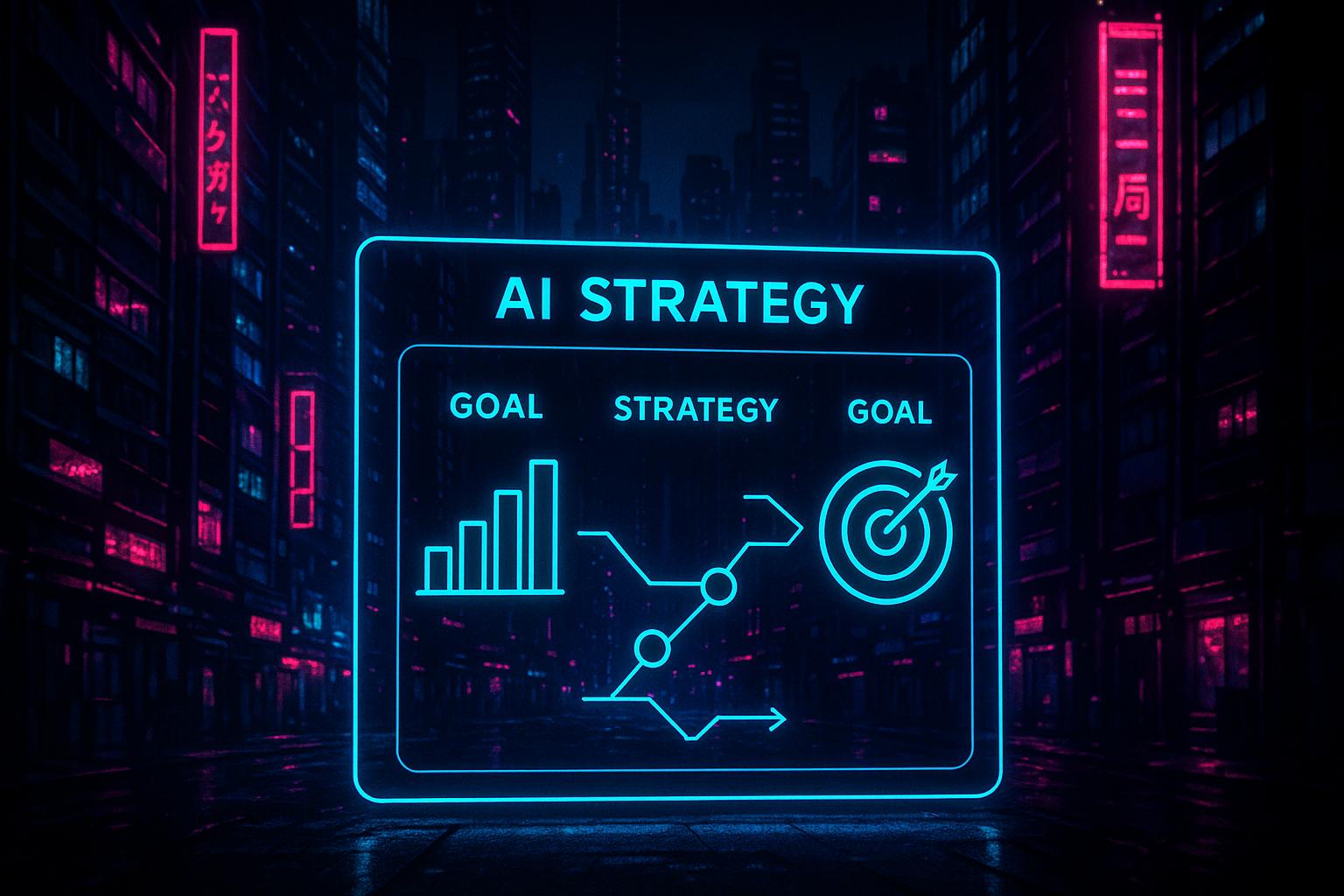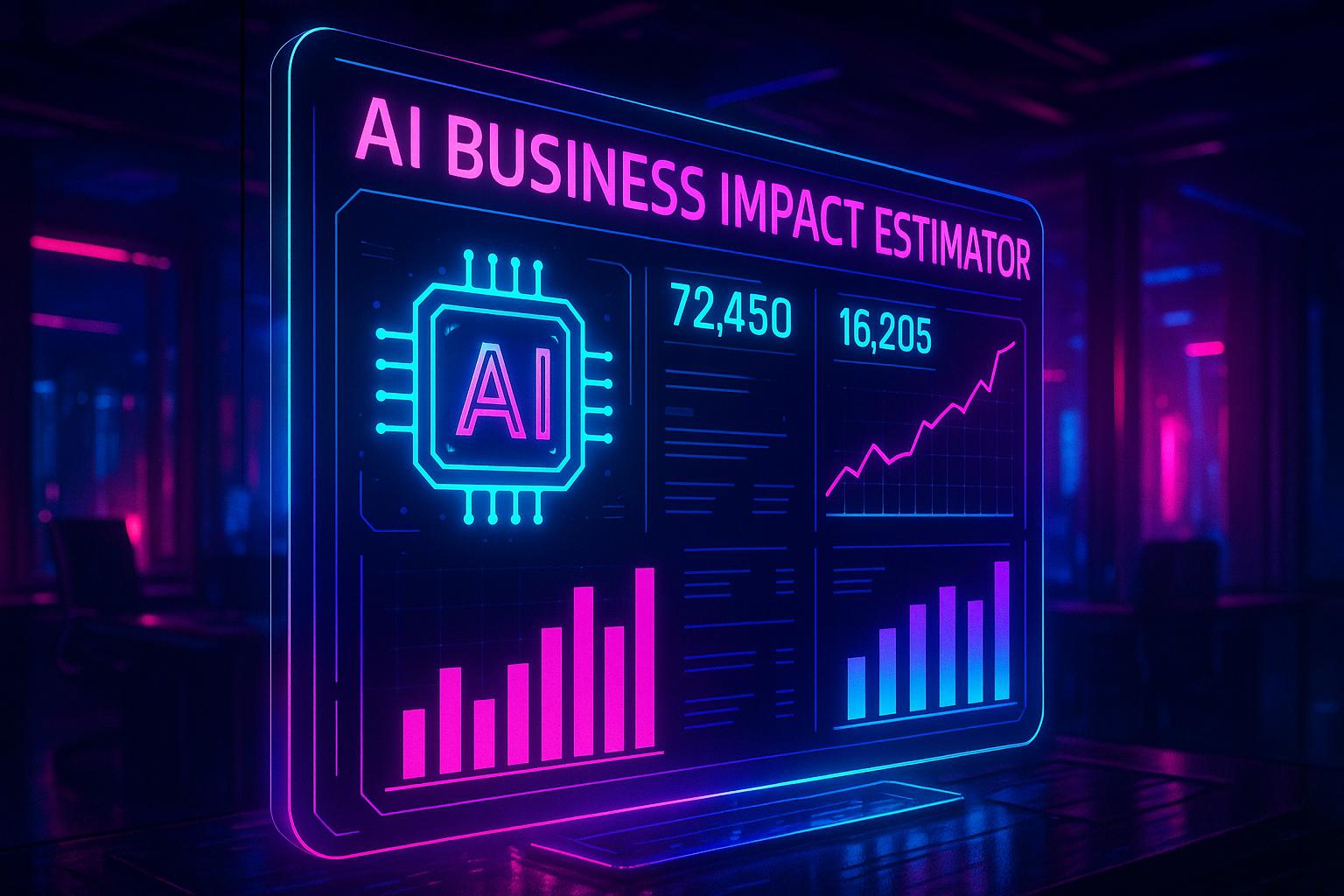Automated decision-making systems (ADMS) use data, AI models, and predefined rules to make decisions without human input. They’re widely used in industries like finance, healthcare, retail, and manufacturing to improve efficiency, reduce errors, and save time. Here’s a quick breakdown:
- What They Do: Analyze data and make decisions automatically or assist humans in decision-making.
- Key Benefits: Faster processes (40–60% time savings), consistent results, reduced human error, and 24/7 operation.
- Industries:
- Finance: AI tools predict investments and automate document reviews.
- Healthcare: AI diagnoses with high accuracy.
- Retail: Personalized product recommendations drive sales.
- Manufacturing: Predictive maintenance boosts efficiency.
- How They Work:
- Data Collection: Systems pull data from various sources.
- AI Models: Algorithms process the data to identify patterns.
- Decision Rules: Predefined criteria turn insights into actions.
- Human Oversight: Automation levels vary - some systems operate independently, while others require human supervision for high-stakes tasks.
ADMS are transforming how businesses operate by speeding up decisions, improving accuracy, and handling large-scale data.
AI Decision-Making: The Good and the Bad and How to Use it to Improve Your Digital Business
Main Parts of Automated Decision-Making
Automated decision-making systems are built on three key components that work together to turn raw data into actionable outcomes. Understanding these elements is crucial for businesses aiming to implement automation effectively and address any challenges along the way.
Data Sources
The foundation of any automated decision-making system lies in its data sources. These systems draw from both structured and unstructured data, including IoT sensors, social media activity, customer interactions, and real-time market updates.
However, poor data quality can be a costly problem. In fact, 60% of tech executives report that bad data costs organizations almost $13 million annually. To ensure decisions are accurate and relevant, high-quality data is non-negotiable.
Take Walmart, for example. Their AI-powered inventory system analyzes sales trends, customer preferences, and supply chain data to maintain optimal stock levels across thousands of stores. Similarly, John Deere leverages satellite imagery, weather data, and soil sensors to provide farmers with real-time advice on irrigation and fertilization.
Data must also stay current. Around 40% of email users, for instance, change their addresses every two years. Regular updates are essential to keep the system's insights reliable and actionable.
AI Models
Once high-quality data is in place, AI models take over. Algorithms like decision trees and neural networks process this data to uncover patterns and generate insights that drive decisions.
The impact of AI in decision-making is significant. For example, healthcare AI models analyzing mammograms outperform expert radiologists, reducing false negatives by over 2.5% and false positives by 1.2%. In finance, AI-based credit scoring systems have increased loan approval rates by 20–30% for previously "unscorable" applicants, while also cutting default rates by up to 15%.
A FinTech company in Phoenix worked with Intellias to create a SaaS lending platform that uses AI to analyze borrower data from 3-Bureau Credit Reports. The platform automatically categorizes borrowers into risk tiers based on their creditworthiness. Meanwhile, Amazon’s pricing algorithms adjust over 2.5 million prices daily, showing how AI can adapt to market conditions almost instantly.
Decision Rules
The final step involves applying decision rules. These are predefined criteria that translate the insights from AI models into specific business actions.
For example, Johns Hopkins’ TREWS (Targeted, Real-time Early-Warning System) uses electronic health record data to flag patients at high risk for sepsis. With decision rules in place, the system alerts medical staff when intervention is needed. It detects 82% of sepsis cases with nearly 40% accuracy and has reduced patient mortality by 20%.
Decision rules also ensure compliance with business and regulatory standards. In pharmaceutical R&D, AI has shortened the traditional five-year development cycle to just 18 months, and decision rules play a key role in maintaining safety and regulatory compliance during this accelerated process.
In customer service, well-crafted decision rules allow automated systems to handle 78% of routine inquiries in enterprise environments. This frees up human agents to tackle more complex tasks that require empathy and creative thinking.
How Automated Decision-Making Works
Automated decision-making follows a structured process, moving from gathering raw data to executing informed actions. Each step builds upon the last, creating a streamlined flow that helps businesses manage these systems effectively.
Data Collection and Preparation
Data rarely comes ready for analysis. Before it can be used, it needs to go through cleaning, transformation, and validation. The first step, data cleaning, removes duplicates, fills in missing values, and corrects errors to ensure consistency and reliability.
Next comes data transformation, where techniques like normalization and standardization adjust data to prevent larger values from skewing the model's calculations. These steps are critical - poor-quality data can lead to significant revenue losses. Shockingly, 85% of AI initiatives fail due to insufficient data preparation.
Real-world examples show how neglecting this phase can harm both a company’s finances and reputation. To avoid such pitfalls, data validation acts as a final safeguard, ensuring the data meets required standards before moving to the next stage.
AI Model Processing
Once the data is ready, AI models step in to analyze it. This phase often happens in real time, allowing systems to make decisions almost instantly. These models process vast amounts of information, constantly learning and adapting to improve their accuracy over time.
For example, in healthcare, AI analyzes patient records, genetic data, and clinical trial results to predict disease trends or treatment outcomes. Meanwhile, online retailers use AI to adjust prices based on real-time demand, and logistics companies simulate delivery routes under varying weather conditions.
The influence of AI in decision-making is growing rapidly. Gartner estimates that by 2025, 95% of data-driven decisions will involve some level of automation. This shift is transforming how businesses operate and compete.
Decision Implementation
In the final phase, insights generated by AI are turned into actionable decisions. Decision rules and algorithms translate the model's outputs into specific outcomes, reducing the need for human involvement in routine tasks.
Take invoice processing as an example: automation tools use OCR to extract data, verify details, and either approve payments or flag discrepancies. Similar systems are used across industries, from fraud detection to inventory management.
In e-commerce, dynamic pricing algorithms analyze historical sales, inventory levels, competitor prices, and customer behavior to adjust prices in real time. Inventory management systems use real-time sales data and trends to predict stock shortages and automatically reorder products.
In manufacturing, predictive maintenance relies on sensor data to spot patterns that signal potential equipment issues. This allows teams to fix problems before they lead to costly breakdowns.
These examples show how automated decision-making is reshaping industries by improving efficiency and reducing errors.
sbb-itb-042ebc8
Human Control, Transparency, and Legal Requirements
Balancing the efficiency of automation with human oversight is essential for reliable and accountable decision-making. Businesses need to carefully decide when to rely on automation and when human control is necessary, especially for critical decisions.
Automation Levels
The level of automation varies depending on the complexity of the decision being made.
- Fully automated systems are ideal for routine, low-risk tasks like inventory management or answering basic customer queries. These systems operate independently without human intervention, making them a good fit for high-volume processes where mistakes have minimal consequences.
- Human-supervised systems strike a balance by allowing AI to make recommendations while leaving final decisions to humans. This approach is particularly effective for sensitive tasks like credit approvals, hiring decisions, or medical diagnoses, where human judgment remains essential.
"While AI can assist with many tasks, it cannot replace the vital role of human judgment." - Laura M. Cascella
- Decision-support tools offer the highest degree of human control. These systems analyze data and provide insights, but all final decisions rest with human operators. They are especially useful for strategic planning, complex negotiations, or scenarios requiring ethical considerations.
Choosing the right level of automation depends on the nature of the task. High-stakes decisions demand human oversight, while routine tasks can often run on autopilot. To make this distinction clear, companies should establish clear guidelines about which decisions require human approval and which can be automated.
Clear and Auditable Processes
Transparency is not just a good practice - it’s a necessity for fostering trust and ensuring accountability. Explainable AI (XAI) plays a key role here, as it helps businesses understand how their systems arrive at decisions. This clarity makes it easier to identify issues and refine performance.
To ensure transparency, businesses should document every aspect of their AI systems, including data sources, methods, tools, decisions, assumptions, and trade-offs made during development and deployment. Regular audits are also critical for evaluating AI systems for bias, accuracy, and alignment with business goals.
A cautionary tale comes from the Dutch government’s welfare fraud detection system. In the early 2020s, this algorithm disproportionately targeted minorities and low-income families based on factors like nationality and neighborhood. Thousands of innocent families were falsely accused, sparking lawsuits, public outrage, and the system’s eventual dismantling. The failure stemmed from a lack of transparency, ethical lapses, and weak governance.
User feedback mechanisms are another vital component of transparency. Businesses should actively seek and incorporate user feedback into their systems’ design and operation. Public complaint systems can also help users report violations or concerns.
"Transparency means people should be able to see and understand how decisions are made. This doesn't mean everyone needs to be a data scientist. But basic explanations help users feel informed, not powerless." - Corestrat.ai
By embracing transparency, businesses can build systems that meet both ethical standards and rigorous legal requirements.
U.S. Legal Compliance
The regulatory framework for automated decision-making is evolving rapidly, with new laws emerging at both state and federal levels. Staying compliant not only helps businesses avoid legal trouble but also ensures their systems align with ethical standards.
Federal laws, like the Equal Credit Opportunity Act, and state-level regulations, such as New York City’s Local Law 144 and the Colorado AI Act, require measures like bias audits, explainability, and compliance protocols. For example, NYC’s Local Law 144 mandates bias audits for automated hiring tools, with penalties ranging from $500 to $1,500 per violation. The Colorado AI Act, effective February 1, 2026, is the first comprehensive AI law in the U.S. It imposes a "duty of reasonable care" on developers and users of high-risk AI systems to protect consumers from algorithmic discrimination.
Additionally, state privacy laws give consumers the right to opt out of profiling based on automated decisions that have significant effects. These laws often require businesses to conduct data protection assessments and meet notice and access requirements.
Key compliance strategies include identifying which AI models are subject to automated decision-making regulations, conducting risk assessments, and implementing safeguards like human oversight, clear explanations, complaints and appeals processes, opt-out options, and bias testing. Privacy laws are increasingly being used to address the risks of automated systems, as these technologies often rely on large amounts of personal data.
As regulations continue to evolve, businesses must stay informed and adapt their systems to meet new requirements. Partnering with legal experts who understand both AI and regulatory landscapes can help ensure ongoing compliance and reduce risks.
Business Applications and Results
Automated systems are transforming how businesses operate and interact with their customers. Companies like Falcon Corporate Systems are leading the way, offering modular AI solutions that help businesses simplify document processing, improve customer service, and make smarter decisions using data.
Document Processing Automation
Automating document processing takes the hassle out of extracting and organizing data. It not only speeds up workflows but also reduces errors and ensures compliance. For example, contract management becomes much more efficient with automated tools that extract key elements and track milestones, cutting down review times. Similarly, processes like customer onboarding and insurance claims handling benefit from faster and more accurate processing of identity documents, financial records, and medical claims. These automated systems can slash handling costs by 60–80% and typically deliver a return on investment within 6–12 months.
By saving time and reducing errors, businesses can focus on creating better customer experiences and making strategic decisions.
Customer Service Improvement
AI is also reshaping customer service. Chatbots and voicebots now handle inquiries around the clock, offering faster responses and 24/7 support. A staggering 84% of companies consider AI essential for customer service, with some reporting that complaint resolution times have improved by up to 52%. Automated self-service tools can resolve up to 85% of customer issues while significantly cutting average handling times. With two-thirds of millennials expecting real-time service and three-quarters of customers seeking seamless, cross-channel experiences, AI-driven solutions are meeting these demands head-on. In fact, over 75% of businesses have reported faster response times and greater efficiency from their support teams.
Data Analysis for Better Decisions
AI-powered data analysis is enabling businesses to make quicker, more accurate decisions. Automated systems can process massive datasets continuously, turning them into actionable insights. This eliminates the delays and errors of manual decision-making while improving accuracy over time. For instance, an insurance company uses AI to streamline underwriting and claims processes, cutting task durations from days to minutes while reducing errors and boosting customer satisfaction. Similarly, legal teams can extract critical data points from complex contracts in seconds, freeing them to focus on higher-value work.
With advanced AI technologies, systems can learn from new data and adapt in real time. These capabilities are expected to add up to $1 trillion in value annually. Faster responses, greater accuracy, and scalability are just some of the ways automation is giving businesses a competitive edge.
Summary
Automated decision-making, as discussed earlier, relies on combining robust data sources, advanced AI models, and clear decision rules. These systems work together to process information quickly and consistently, offering scalable solutions. By simplifying complex workflows, they enable businesses to respond faster and more effectively to both challenges and opportunities. This streamlined approach significantly accelerates routine operations.
The time-saving potential is striking. Automation can cut decision-making time by 40–60%, transforming processes that once took days into tasks completed in mere minutes. For example, automated loan approval systems use pre-set algorithms to evaluate credit scores, income, and employment data, determining repayment likelihood almost instantly.
"Decision Automation opens up a way for companies to optimize decision making by using rules and data to automatically make accurate, effective and fact-based decisions." - Bots & People
Beyond speed, automated systems deliver consistent and accurate results. They eliminate human errors and ensure decisions are made reliably, 24/7. This level of dependability has a tangible impact, as businesses adopting data-driven strategies often see measurable improvements.
Scalability is another standout feature. Automated systems can handle growing data volumes and increasingly complex decision-making tasks without losing efficiency. Companies using advanced automation report productivity gains of 40–60% and operational cost reductions of 25–35%. In knowledge work settings, AI assistants have been shown to boost individual productivity by 50–70%.
This shift impacts every area of business. Whether it’s procurement, finance, customer service, or sales, automated decision-making frees up resources for strategic initiatives while maintaining data-driven precision. Companies like Falcon Corporate Systems are leading the way, offering modular AI solutions that help businesses harness these benefits effectively.
The numbers speak for themselves: 74% of top-performing companies now use AI to support core business strategies, and real-time personalization engines have been shown to increase customer satisfaction by 40–60%. Automated decision-making isn’t just an operational upgrade - it’s becoming a critical tool for businesses aiming to stay competitive in today’s data-focused world.
FAQs
How do automated decision-making systems maintain accurate and reliable data?
Automated decision-making systems enhance data accuracy and reliability through processes like validation, cleansing, and monitoring. These systems rely on automated rules to spot inconsistencies, flag errors in real time, and uphold data integrity. Continuous feedback loops further fine-tune the system, improving its performance over time.
AI models contribute significantly by automating the detection of errors, anticipating potential problems, and reducing the need for manual oversight. This ensures the data remains consistent, complete, and relevant - essential qualities for making dependable decisions.
What ethical challenges and risks come with using automated decision-making in industries like healthcare and finance?
Automated decision-making systems are increasingly being used in critical areas like healthcare and finance, but they bring along some serious ethical concerns and risks. One major issue is bias and discrimination. Since these systems often learn from historical data, they can unintentionally pick up and even magnify existing biases in that data. The result? Decisions that may be unfair or unequal.
Another pressing problem is the lack of transparency in how these systems operate, often called the "black box" problem. When the decision-making process is unclear, it becomes challenging for people to understand, question, or trust the outcomes. On top of that, concerns around privacy violations and the mishandling of sensitive data can further undermine trust and compromise security.
To tackle these challenges, organizations need to focus on ethical governance. This includes taking active steps to minimize bias, ensuring transparency in how decisions are made, and maintaining accountability. By doing so, they can promote fairness and build public confidence in these technologies.
How can businesses decide the right level of human oversight for their automated decision-making systems?
To figure out the appropriate level of human oversight for automated decision-making systems, businesses need to pinpoint key moments where human involvement is absolutely necessary. These could include situations involving high-stakes decisions or areas where bias might creep in. Setting up clear processes - like override options and regular audits - can help safeguard accountability and system reliability.
It’s also important to assign specific roles for oversight, establish ethical guidelines, and keep a close eye on AI outputs. As these systems grow and change, frequent reviews and tweaks to the oversight process are essential to ensure they stay safe, accurate, and aligned with the company’s objectives.






.png)